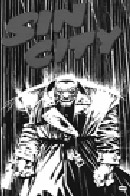Miller's masterpiece reads well visually
Wait a minute, Sin City may not be a novel by the traditional sense, but it is a graphic novel, and the genre has recently taken off and no longer confined to your local comic bookstore.
Sin City is a series of graphic novels written in the early nineties by Frank Miller. It's best known now for the ultra-cool movie that came out in 2005 based on the novels that preceded it and its cinematic presence will be continuing with at least one more film in the series.
 The novels (and I call them novels at the risk of my academic integrity, but again, ah do wha' ah wan') follow the misadventures of several different citizens in the city who are all. The story, though, has not one main character or plot, but many that intersect. Think of the story as a mural and each character as a piece of the overall portrait. The novels tell the story of the city, using the characters as a vehicle instead of the other way around. If anything, the city itself is the main character and the characters in it are the events that happen to it.
The novels (and I call them novels at the risk of my academic integrity, but again, ah do wha' ah wan') follow the misadventures of several different citizens in the city who are all. The story, though, has not one main character or plot, but many that intersect. Think of the story as a mural and each character as a piece of the overall portrait. The novels tell the story of the city, using the characters as a vehicle instead of the other way around. If anything, the city itself is the main character and the characters in it are the events that happen to it.
Sin City is at the same time ultra-satirical, but somehow manages to maintain almost a modernist's romance (I know that's kind of a paradoxical statement, but I stand by it) in that each of the characters live in a world structured on social Darwinism, aristocracy and human segregation, yet they're each driven by their own emotions to fight against the evils of those at the top of this world (even through their own evil means) to accomplish something they feel is in the end justified or beneficent.
There is obviously a comic book feel to it, and some of the situations are a tad ludicrous, but it is forgivable, as long as you allow yourself to be immersed in it deeply enough.
Each of the characters seem a little flat at times, and there is the occasional continuity error, but it can be set aside. Still, it can be a little distracting when a character has a stomach full of bullets and still tossing people about like rag dolls. Again, the story is more about the city than those that live in it, so maybe this was just a way to direct your focus on what's happening to the surroundings.
What's done most effectively is how well each character tells each story. The reader is given constant updates about how the character telling his tale is feeling. Because the characters aren't exactly core-of-the-earth deep, their thoughts vary little, however, because it's done well you barely notice it. At least in this way the characters stay consistent.
There are also a few issues with sexism in the series. Women are either portrayed as sex objects in the background, or as damsels in distress that serve as plot movers. I suppose that it's used effectively as something that helps portray the world that the story takes place in, but this is just one of the things that can seem a little over the top. Buying into the idea of the existence of a Sin City isn't exactly a small task, and it is for the most part done effectively, it's just the occasional hiccup that I suppose couldn't be avoided (or perhaps was more easily avoided at the time it was published).
This isn't to say that the story is bad. I personally really enjoyed it. The characters represent certain aspects of humanity and do so very well, each episode of events can be thrilling and enjoyable and the narrative is done as well as in some actual novels. But there are faults to it, they can be overlooked, but they're clearly there.













